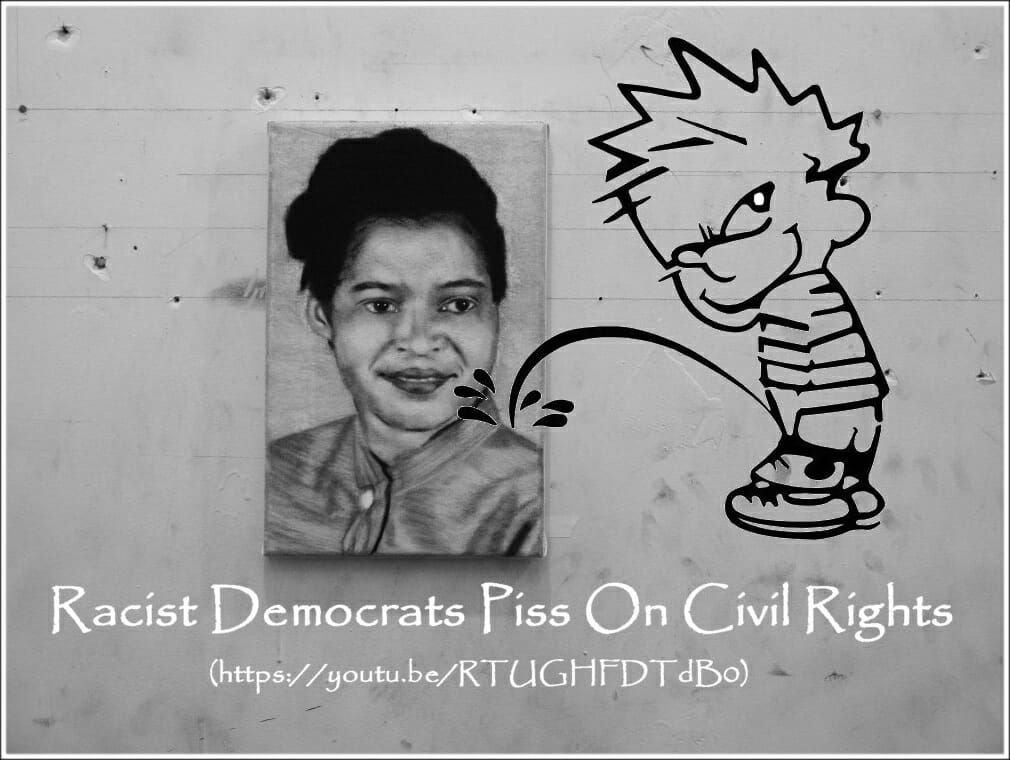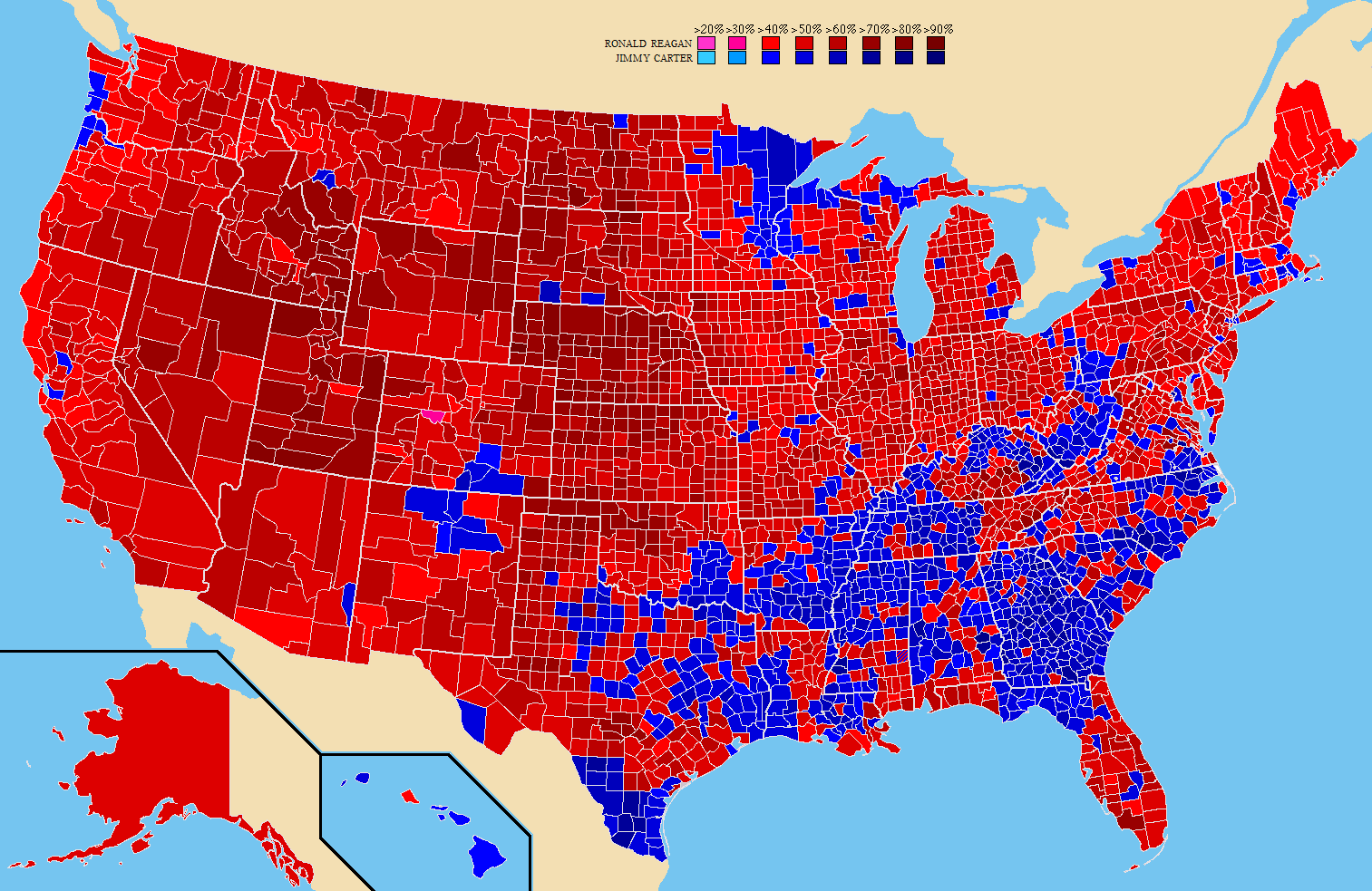Dennis Prager had Larry Elder on for his “Ultimate Issues Hour.” Larry IS an ultimate issue, so every hour of him is technically “ultimate.” I add some video both of the example Larry speaks of where Keith Ellison says George Wallace was a Republican (see LEGAL INSURRECTION for more: ). I also include a tad of the in-studio visit of Larry when he responds to a callers challenge.
George Wallace


Michael Medved Interviews Dinesh D’Souza About His New Film
In this wonderful interview, Dinesh discusses his detractors LACK of knowledge about the content of his film and his positions taken in it. Discussion about the “Southern Strategy,” as well as other historical myths is always an added plus to those that enjoy our political and racial history and the mantras surrounding our past. I include some expanded thoughts by Michael in the opening of the following hour in regard to a caller, I also include a snippet of Larry Elder expanding a bit on Michael’s discussion of interracial marriage from PRAGER U. See my PAGE dealing with much of this HERE (it is big and may take a moment to load).

Democrats – Then and Now (Meme)
Hat-Tip to YOUNG CONS ~ See my PAGE on the U.S.’s Racial History:

Did The Party’s Switch?
- “…virtually every significant racist in American political history was a Democrat.” — Bruce Bartlett, Wrong on Race: The Democratic Party’s Buried Past (New York, NY: Palgrave MacMillan, 2008), ix;
- “…not every Democrat was a KKK’er, but every KKK’er was a Democrat.” — Ann Coulter, Mugged: Racial Demagoguery from the Seventies to Obama (New York, NY: Sentinel [Penguin], 2012), 19.
THE SWITCH
Just a quick intro to this video, it was at a Young American’s Foundation sponsored eveny at the University of Wisconsin, and a professor gets up to correct D’Souza on the Dixiecrat’s all becoming Republicans. It didn’t go well for the professor:
From a wonderful article from Freedom’s Journal Institute’s series, URBAN LEGENDS: The Dixiecrats and the GOP…
THE DIXIECRATS
…During the Philadelphia nominating convention of the Democrat Party in 1948 a number of disgruntled southern segregationist democrats stormed out in protest. They were upset about planks in the new platform that supported Civil Rights.[1]
They left to form a new Party called the State’s Rights Democratic Party also known as the Dixiecrats. Segregationist like George Wallace and other loyalists, although upset, did not bolt from the party; but instead supported another candidate against Harry Truman. According to Kari Frederickson, the goal for the Dixiecrats “was to win the 127 electoral-college votes of the southern states, which would prevent either Republican Party nominee Thomas Dewy or Democrat Harry Truman from winning the 266 electoral votes necessary for election. Under this scenario, the contest would be decided by the House of Representatives, where southern states held 11 of the 48 votes, as each state would get only one vote if no candidate received a majority of electors’ ballots. In a House election, Dixiecrats believed that southern Democrats would be able to deadlock the election until one of the parties had agreed to drop its civil rights plank.”[2]
Notably, this stated aim is apparent in the third plank of the Dixiecrat’s platform which states, “We stand for social and economic justice, which, we believe can be guaranteed to all citizens only by a strict adherence to our Constitution and the avoidance of any invasion or destruction of the constitutional rights of the states and individuals. We oppose the totalitarian, centralized bureaucratic government and the police nation called for by the platforms adopted by the Democratic and Republican Conventions.”[3]
What is even more telling, and speaks directly to the incredulous nature of this urban legend, is the fact that the Dixiecrats rejected the Civil rights platforms of not one, but both parties. Republicans had always supported civil rights since their inception (see GOP party platform here). What was new is that the Democrats, led by Harry Truman, were publicly taking a stand for Civil rights (see Democrat Party Platform here). The ‘totalitarian, centralized bureaucratic government”, according to the Dixiecrats, was the federal government’s enforcement of the 14th and 15th amendments to the U.S. Constitution. With both parties, now, standing for Civil rights the segregationist had no party to go too. Thus, they started their own with the idea of causing a stalemate, which they hoped to break, once both parties relinquished their pro-civil rights planks.
Which way did they go?
The strategy of the State’s Rights Democratic Party failed. Truman was elected and civil rights moved forward with support from both Republicans and Democrats. This begs an answer to the question: So where did the Dixiecrats go? Contrary to legend, it makes no sense for them to join with the Republican Party whose history is replete with civil rights achievements. The answer is, they returned to the Democrat party and rejoined others such as George Wallace, Orval Faubus, Lester Maddox, and Ross Barnett. Interestingly, of the 26 known Dixiecrats (5 governors and 21 senators) only three ever became republicans: Strom Thurmond, Jesse Helms and Mills E. Godwind, Jr. The segregationists in the Senate, on the other hand, would return to their party and fight against the Civil Rights acts of 1957, 1960 and 1964. Republican President Dwight Eisenhower proffered the first two Acts.
Eventually, politics in the South began to change. The stranglehold that white segregationist democrats once held over the South began to crumble. The “old guard” gave way to a new generation of politicians. The Republican Party saw an opportunity to make in-roads into the southern states appealing to southern voters. However, this southern strategy was not an appeal to segregationists, but to the new political realities emerging in the south.[4]…
[1] See the 1948 Democrat Party Platform.
[2] Encyclopedia of Alabama – Dixiecrat.
[3] Read more at the American Presidency Project.
[4] I will talk more about the Southern Strategy in another article.
Here is another great excerpt from Ann Coulter from her excellent book, Mugged, regarding this “change dealing with Senators:
In 1948, Thurmond did not run as a “Dixiecan,” he ran as a “Dixiecrat.” As the name indicates, the Dixiecrats were an offshoot of the Democratic Party. When he lost, Thurmond went right back to being a Democrat.
All segregationists were Democrats and—contrary to liberal fables—the vast majority of them remained Democrats for the rest of their lives. Many have famous names—commemorated in buildings and statues and tribute speeches by Bill Clinton. But one never hears about their segregationist pasts, or even Klan memberships. Among them are: Supreme Court justice Hugo Black; Governor George Wallace of Alabama; gubernatorial candidate George Mahoney of Maryland; Bull Connor, Commissioner of Public Safety for Birmingham, Alabama; Governor Orval Faubus of Arkansas; and Governor Lester Maddox of Georgia.
But for practical purposes, the most important segregationists were the ones in the U.S. Senate, where civil rights bills went to die. All the segregationists in the Senate were of course, Democrats. All but one remained Democrats for the rest of their lives—and not conservative Democrats. Support for segregation went hand in hand with liberal positions on other issues, too.
The myth of the southern strategy is that southern segregationists were conservatives just waiting for a wink from Nixon to switch parties and join the Reagan revolution. That could not be further from the truth. With the exception of Strom Thurmond—the only one who ever became a Republi-can—they were almost all liberals and remained liberals for the rest of their lives. Of the twelve southern segregationists in the Senate other than Thurmond, only two could conceivably be described as “conservative Democrats.”
The twelve were:
- Senator Harry Byrd (staunch opponent of anti-communist Senator Joseph McCarthy);
- Senator Robert Byrd (proabortion, opponent of 1990 Gulf War and 2002 Iraq War, huge pork barrel spender, sending more than $1 billion to his home state during his tenure, supported the Equal Rights Amendment, won a 100 percent rating from NARAL Pro-Choice America and a 71 percent grade from the American Civil Liberties Union in 2007);
- Senator Allen Ellender of Louisiana (McCarthy opponent, pacifist and opponent of the Vietnam War);
- Senator Sam Ervin of North Carolina (McCarthy opponent, anti-Vietnam War, major Nixon antagonist as head the Watergate Committee that led to the president’s resignation);
- Senator Albert Gore Sr. of Tennessee (ferocious McCarthy opponent despite McCarthy’s popularity in Tennessee, anti-Vietnam War);
- Senator James Eastland of Mississippi (conservative Democrat, though he supported some of FDR’s New Deal, but was a strong anti-communist);
- Senator J. William Fulbright of Arkansas (staunch McCarthy opponent, anti-Vietnam War, big supporter of the United Nations and taxpayer-funded grants given in his name);
- Senator Walter F. George of Georgia (supported Social Security Act, Tennessee Valley Authority and many portions of the Great Society);
- Senator Ernest Hollings (initiated federal food stamp program, supported controls on oil, but later became a conservative Democrat, as evidenced by his support for Clarence Thomas’s nomination to the Supreme Court);
- Senator Russell Long (Senate floor leader on LBJ’s Great Society programs);
- Senator Richard Russell (strident McCarthy opponent, calling him a “huckster of hysteria,” supported FDR’s New Deal, defended Truman’s firing of General Douglas MacArthur, mildly opposed to the Vietnam War);
- Senator John Stennis (won murder convictions against three blacks based solely on their confessions, which were extracted by vicious police floggings, leading to reversal by the Supreme Court; first senator to publicly attack Joe McCarthy on the Senate floor; and, in his later years, opposed Judge Robert Bork’s nomination to the Supreme Court).
The only Democratic segregationist in the Senate to become a Republican—Strom Thurmond—did so eighteen years after he ran for president as a Dixiecrat. He was never a member of the terroristic Ku Klux Klan, as Hugo Black and Robert Byrd had been. You could make a lot of money betting people to name one segregationist U.S. senator other than Thurmond. Only the one who became a Republican is remembered for his dark days as a segregationists Democrat.
As for the remaining dozen segregationists, only two—Hollings and Eastland—were what you’d call conservative Democrats. The rest were dyed-in-the-wool liberals taking the left-wing positions on issues of the day. Segregationist beliefs went hand in hand with opposition to Senator Joe McCarthy, opposition to the Vietnam War, support for New Deal and Great Society programs, support for the United Nations, opposition to Nixon and a 100 percent rating from NARAL. Being against civil rights is now and has always been the liberal position.
- Ann Coulter, Mugged: Racial Demagoguery from the Seventies to Obama (New York, NY: Sentinel [Penguin], 2012), 176-178.
OPPOSING CIVIL RIGHTS
Related as well is the recorded votes of which party supported the Civil Rights history regarding persons of color
WHICH PARTY OPPOSED CIVIL RIGHTS?
The voting rolls of the Civil Rights laws speak for themselves. The Civil Rights Act of 1964 passed the House with 153 out of 244 Democrats voting for it, and 136 out of 171 Republicans. This means that 63 percent of Democrats and 80 percent of Republicans voted “yes.” In the Senate, 46 out of 67 Democrats (69 percent) and 27 out of 33 Republicans (82 percent) supported the measure.
The pattern was similar for the Voting Rights Act of 1965. It passed the House 333-85, with 24 Republicans and 61 Democrats voting “no.” In the Senate, 94 percent of Republicans compared with 73 percent of Democrats supported the legislation.
Here’s a revealing tidbit: had Republicans voted for the Civil Rights laws in the same proportion as Democrats, these laws would not have passed. Republicans, more than Democrats, are responsible for the second civil rights revolution, just as they were solely responsible for the first one. For the second time around, Republicans were mainly the good guys and Democrats were mainly the bad guys.
Here’s further proof: the main opposition to the Civil Rights Movement came from the Dixiecrats. Note that the Dixiecrats were Democrats; as one pundit [Coulter] wryly notes, they were Dixiecrats and not Dixiecans.
The Dixiecrats originated as a breakaway group from the Democratic Party in 1948. For a time, the Dixiecrats attempted to form a separate party and run their own presidential ticket, but this attempt failed and the Dixiecrats reconstituted themselves as a rebel faction within the Democratic Party.
Joined by other Democrats who did not formally ally themselves with this faction, the Dixiecrats organized protests against desegregation rulings by the Supreme Court. Dixiecrat governors refused to enforce those rulings. Dixiecrats in the Senate also mounted filibusters against the Civil Rights Act of 1957 and the Civil Rights Act of 1964. Johnson’s Democratic allies in Congress required Republican votes in order to defeat a Dixiecrat-led filibuster and pass the Civil Rights Act of 1964.
Leading members of the Dixiecrat faction were James Eastland, Democrat from Mississippi; John Stennis, Democrat from Mississippi; Russell Long, Democrat from Louisiana; Strom Thurmond, Democrat from South Carolina; Herman Talmadge, Democrat from Georgia; J. William Fulbright, Democrat from Arkansas; Lester Maddox, Democrat from Georgia; Al Gore Sr., Democrat from Tennessee; and Robert Byrd, Democrat from West Virginia. Of these only Thurmond later joined the Republican Party. The rest of them remained Democrats.
The Dixiecrats weren’t the only racists who opposed civil rights legislation. So did many other Democrats who never joined the Dixiecrat faction. These were racists who preferred to exercise their influence within the Democratic Party, which after all had long been the party of racism, rather than create a new party. Richard Russell of Georgia—who now has a Senate Building named after him—and James Eastland of Mississippi are among the segregationist Democrats who refused to join the Dixiecrat faction.
Now the GOP presidential candidate in 1964, Barry Goldwater, did vote against the Civil Rights Act. But Goldwater was no racist. In fact, he had been a founding member of the Arizona NAACP. He was active in integrating the Phoenix public schools. He had voted for the 1957 Civil Rights Act.
Goldwater opposed the 1964 act because it outlawed private as well as public discrimination, and Goldwater believed the federal government did not have legitimate authority to restrict the private sector in that way. I happen to agree with him on this—a position I argued in The End of Racism. Even so, Goldwater’s position was not shared by a majority of his fellow Republicans.
It was Governor Orval Faubus, Democrat of Arkansas, who ordered the Arkansas National Guard to stop black students from enrolling in Little Rock Central High School—until Republican President Dwight Eisenhower sent troops from the 101st Airborne to enforce desegregation. In retaliation, Faubus shut down all the public high schools in Little Rock for the 1958-59 school year.
It was Governor George Wallace, Democrat of Alabama, who attempted to prevent four black students from enrolling in elementary schools in Huntsville, Alabama, until a federal court in Birmingham intervened. Bull Connor, the infamous southern sheriff who unleashed dogs and hoses on civil rights protesters, was a Democrat.
Progressives who cannot refute this history—facts are stubborn things—nevertheless create the fantasy of a Nixon “Southern strategy” that supposedly explains how Republicans cynically appealed to racism in order to convert southern Democrats into Republicans. In reality Nixon had no such strategy—as we have seen, it was Lyndon Johnson who had a southern strategy to keep blacks from defecting to the Republican Party. Johnson, not Nixon, was the true racist, a fact that progressive historiography has gone to great lengths to disguise.
Nixon’s political strategy in the 1968 campaign is laid out in Kevin Phillips’s classic work The Emerging Republican Majority. Phillips writes that the Nixon campaign knew it could never win the presidency through any kind of racist appeal. Such an appeal, even if it won some converts in some parts of the Lower South, would completely ruin Nixon’s prospects in the rest of the country. Nixon’s best bet was to appeal to the rising middle classes of the Upper South on the basis of prosperity and economic opportunity. This is exactly what Nixon did.
There are no statements by Nixon that even remotely suggest he appealed to racism in the 1968 or 1972 campaigns. Nixon never displayed the hateful, condescending view of blacks that Johnson did. The racist vote in 1968 didn’t go to Nixon; it went to George Wallace. A longtime Democratic segregationist, Wallace campaigned that year on an independent ticket. Nixon won the election but Wallace carried the Deep South states of Arkansas, Louisiana, Mississippi, Alabama, and Georgia.
Nixon supported expanded civil rights for blacks throughout his career while Johnson was—for the cynical reasons given above—a late convert to the cause. Nixon went far beyond Johnson in this area; in fact, Nixon implemented America’s first affirmative action program which involved the government forcing racist unions in Philadelphia to hire blacks.
To sum up, starting in the 1930s and continuing to the present, progressive Democrats developed a new solution to the problem of what they saw as useless people. In the antebellum era, useless people from the Democratic point of view were mainly employed as slaves. In the postbellum period, southern Democrats repressed, segregated, and subjugated useless people, seeking to prevent them from challenging white supremacy or voting Republican. Meanwhile, northern progressives like Margaret Sanger sought to prevent useless people from being born. Today’s progressives, building on the legacy of Wilson, FDR, and Johnson, have figured out what to do with useless people: turn them into Democratic voters.
- Dinesh D’Souza, Hillary’s America: The Secret History of the Democratic Party (New Jersey, NJ: Regnery Publishing, 2016), 141-144.
For MANY MORE resources on this topic,
see my page titled, “U.S. RACIAL HISTORY“

#Black Lives Matter | George Wallace Approved
Hat-Tip to THE BLAZE!
…“White media get to the back! Black media come to the front!” the demonstrator shouted into a microphone.
When white members of the media did not immediately comply with her surreal request, the activist singled them out, telling the crowd that protesters are “not afraid to put people out.”
“Excuse me, sir!” she yelled. “Somebody needs to tell this person to get to the back. Go! Somebody needs to tell these folks to get to the back! We are not afraid to put people out!”
Throughout the rant, she said she “need[s] all white people to move back,” telling them to “take your rightful positions, and get behind us.” She also offered this instruction to fellow Black Lives Matter protesters: ”Y’all see any white folks, direct them to the back of the crowd.”
“You do not have a say up in here,” she told white people at one point.
“White people to the back! Black people to the front!” she repeated again at the end of her remarks…

Keith Ellison Says Racist Democrat George Wallace Was a Republican
For the record… he wasn’t rejected… he was leading the race as a Democrat until he was shot. Here is Michael Medved and the Rev, Wayne Perryman explaining the issue:

Larry Elder vs Hollywood Elitists
Video Description:
Once again “The Sage,” Larry Elder deepens his thoughts on an issue he merely scratched the surface of a couple of days ago (https://youtu.be/8S7ZExx24MM). In this newer edition from yesterday’s show (1-21-16) Larry talks about the recent viral attacks by the left against Stacey Dash saying there shouldn’t be a Black History Month. Prior to that he sets the stage with comparisons to how the media and the left attack Republicans but typically let Democratic political figures escape their wrath. Following Stash’s comment are those of Morgan Freeman’s similar comments.
Other topics dealt with are self-esteem, and the blatant double standards as well as putting all this in the “rich black elite crybaby” category. Great stuff, Larry at his best!
Once again “The Sage,” Larry Elder deepens his thoughts on an issue he merely scratched the surface of a couple of days ago (https://youtu.be/8S7ZExx24MM). In this newer edition from yesterday’s show (1-21-16) Larry talks about the recent viral attacks by the left against Stacey Dash saying there shouldn’t be a Black History Month. Prior to that he sets the stage with comparisons to how the media and the left attack Republicans but typically let Democratic political figures escape their wrath. Following Stash’s comment are those of Morgan Freeman’s similar comments.
Other topics dealt with are self-esteem, and the blatant double standards as well as putting all this in the “rich black elite crybaby” category. Great stuff, Larry at his best!
Listen To Larry On-Line at CRN-Talk Radio [LIVE: 12-2pm]:
★ http://crntalk.com/shows/1144-the-larry-elder-show
Re-broadcast on 870AM (The Answer) from 9-11pm:
★ http://www.am870theanswer.com/weekdayprogramguide.aspx
For more clear thinking like this from Larry Elder… I invite you to visit: http://www.larryelder.com/ ~AND~ http://www.elderstatement.com/

“Weapon of A.S.S Destruction” ~ Excerpt (Alfonzo Rachel)
I wanted to excerpt a portion from a book I recommend everyone to purchase. It is a quick and insightful read well-worth your attention. It is linked to Amazon in the photo. Here is the excerpt from pages 3-11 of Weapon of A.S.S. Destruction:
RACIST PAST OF THE DEMOCRATIC PARTY
Despite what you’ve probably been told your whole life, it was the Democratic Party that fought to keep slavery legal and that worked to impose the Jim Crow laws and the Dred Scott decision. They were Democrats who founded the KKK as a terrorist fraternity against the abolitionist Republicans and the blacks they stood for. Democrats revoked federal office positions held by blacks. Go ahead and look up the policies of Democrats like Woodrow Wilson. I’ll wait…
…You back? See, what’d I tell you? Wilson even had a White House showing of the pro-KKK movie Birth of a Nation.
They were Democrats who fought for segregation in the schools and in the military. They were Democrats who bombed the churches that had a noticeable amount of black members. They were Democrats who hosed peaceful civil rights assemblies and released dogs on them. You’ll probably recognize Bull KKK Connor out there. Yes, he was a Democrat and a member of the Ku Klux Klan.
All the things Martin Luther King Jr. was fighting against were inflicted by the Democratic Party. When King was put in jail, who do you think put him in there? Democrats. Who do you think imposed the legislation that forced people like Rosa Parks to give up her seat for whites and go to the back of the bus? Democrats. Black people had been so successfully disenfranchised by the Democratic Party that John F. Kennedy (a northern senator who opposed civil rights, mind you) had MLK released from jail, and the black community was then so happy with him that they forgot that Democrats jailed MLK in the first place.
They forgot about the Republican President Dwight Eisenhower who sent military support to make sure that black kids could go to school. He also pressed to desegregate the military. He put into action what the Democrat Harry Truman only put on paper. Truman was also a member of the Ku Klux Klan, he just didn’t attend their slumber parties. Or so he says.
I hear sad theories about how blacks feel like the Republicans threw them under the bus in some unwritten deal in the 1877 Compromise known as the Corrupt Bargain. Now I admit, at first glance, it sounds like a harsh deal—but let me explain.
Rutherford B. Hayes emerged from the Civil War as a brigadier general (he later was brevetted major general), a war hero who had been wounded five times, and a member of Congress. In Congress, from 1865 to 1867, Hayes consistently supported radical Republican reconstruction measures which included the Fourteenth Amendment and the setting up of radical Republican regimes in the South.
This was the situation: Ruthy B. would get the White House if he would agree to withdraw the union troops from their southern occupation, which would leave blacks defenseless. But hold on a second—leave them defenseless against whom? Oh yeah! The Democrats. Democrats were the ones blacks needed the protection from. Even then, it wasn’t like Hayes just handed blacks over to the Democrats by withdrawing the Union troops. The hand-shake deal was that the Democrats would honor the rights of blacks.
Keep in mind, the so-called Corrupt Bargain was an unwritten deal, meaning there is no formal record of it. However, what is on record is that Rutherford B. Hayes was a staunch abolitionist who defended blacks pro bono against the Fugitive Slave Act, signed in by Democratic President Thomas Jefferson.
Ruthy B. also endorsed the impeachment of President Andrew Johnson. Remember, y’all, Andrew Johnson was the Democratic president who revoked Sherman’s Field Order No. 15 during the March to the Sea. That’s the forty acres and a mule order that Republican President Lincoln approved. So, for the Afrocentrics that are still demanding their forty acres and a mule, you should be angry only at the Democrats.
Y’all might be wondering why a racist like Andrew Johnson would be Lincoln’s vice president. That’s because, as y’all know, the preservation of the Union was paramount to Lincoln. In fact, it was more important than freeing slaves, because if the Union dissolved, slaves could forget about their freedom altogether. Though pretty much all Democrats were pro-slavery, some of them were not pro-secession. This is where Andrew Johnson comes in: Johnson was pro-slavery, but he was also staunchly in favor of protecting the Union from disintegration. Though Lincoln was anti-slavery, he was able to use Andrew Johnson’s policies to his advantage. Because of Johnson, he was able to rack up some southern votes. Yes, perhaps a southern strategy of sorts.
In light of all of this, you can see that Rutherford B. Hayes and the Republican Party in general are on record risking their political careers and their lives for black freedom for years, whereas the Democrats were ostracizing and oppressing black people. So why is it that something that’s not even on record (the 1877 Compromise) convinces us that the Republicans deserve the heave-ho? I understand black people felt as if the heave-ho was what they got, but even if that were the case, why don’t we look at who backed us into a corner in the first place? That would be the Democrats. Democrats have always been ravaging the black community, and Republicans always get the blame for it. Not a single thing has changed in over 150 years.
DIVIDE AND CONQUER
Now, after we’ve made the hard-hitting case of the history of Democrat bigotry, the liberals and Afrocentrics will try to use some cockamamie excuse that the Democrats and Republicans switched sides, and the Republicans today are what used to be the Dixiecrats. But even before this so-called switch (and we’ll get to that), blacks had already started voting for the Democratic Party. So come on, y’all. What was the reason they started voting for the Democrats before the so-called big switch?
Divide and conquer, y’all! Haven’t you ever heard of that strategy? The Democrats divided blacks from the Republican Party and corralled them for their voting stock by seducing them with entitlements. Blinded by disenfranchisement, the black community couldn’t even see that their loyalty was being bought ever so cheaply by the very ones who were oppressing them. Look here, Negro: you can’t eat here, and you can’t go to school there, but here’s some food stamps so you can feel good about it. The Republicans would never do that for ya! The black community has been sold on the idea that entitlements are more valuable than dignity.
Even when the Republicans had a majority vote ready to pass the civil rights act, the Democrats filibustered the bill. Now the liberals will try to give Lyndon B. Johnson the credit for this, post facto. But LBJ can be credited for another agenda: he said he was dead set on having those n-words vote for Democrats for the next 200 years. You liberals want to believe there was a southern strategy so bad? Well, there it is. LBJ clearly laid it out for you. Republicans wanted blacks to have civil rights for one simple reason: it’s their civil right. LBJ wanted blacks to have civil rights because he wanted to use them to keep Democrats in power.
This wasn’t the first time blacks were used for their votes. LBJ’s agenda harkens back to the Constitutional patriarchs of the Democrat Party. Even though pro-slavery founders viewed their slaves as property and not people, they would still count them as people in the census in order to gain more pro-slavery representation. That’s pretty sick, ain’t it? Count the slaves as people only to get more representation for legislation that would ultimately make them property instead of people. Yeah, Democrats are sick. LBJ was the same way. He wanted blacks to have civil rights only in order to empower the Democratic Party—to keep the black community as their faithful voting stock.
Now, when you tell backward-thinking liberals all this, they start squirming. They’re losing the game, and like a spoiled rotten kid they’ll try to twist the game. And here it comes y’all! Here comes their twisted response to everything you just told them because they refuse to face the truth about the Democrats:
Say it with me: Well, the parties have switched, and the Republicans of today used to be the Dixiecrats.
Okay, let’s break this down. First of all, they won’t really acknowledge the bigoted history of Democrats. If you’re going to assert that there was a switch, then you have to admit that the Democrats had been the racist party in the first place—but you won’t, because you got nowhere to go from there. You’ve got no good explanation for why the black community started voting for Democrats long before the so-called big party switch. But that’s okay. I’ve already told ya why that happened a few paragraphs back. In a nutshell, the black community was bamboozled into voting Democrat and are still hoodwinked and co-opted today.
Secondly, their response begs the question: was the big party switch a mutual switch? I mean, did Republicans get up and walk over to the Democrat side, and Democrats get up and walk over to the Republican side? That would be an amazing display of cooperation between the two parties, wouldn’t it?
Now, it is true that some Democrats were seen as going soft on racism, but the staunchly racist Democrats became known as Dixiecrats, and that’s as far as they went. Those Dixiecrats did not transition over to become Republicans. They returned to the Democratic Party. Dixiecrats declared that they would rather vote for a “yellow dog” than vote fora Republican because the Republican Party was known as the party for blacks. Let me introduce you to the crowd that returned to the Democratic Party after the so-called switch:
- Benjamin Laney AR,
- Frank Dixon AL,
- Hugh White MS,
- William Murray OK,
- Sam Jones LA,
- Fielding Wright MS,
- US Sen. James Eastland,
- US Sen. John Stennis,
- US Rep. John Williams,
- US Rep. William Colmer,
- Walter Sillers MS S.O.H.
Editors Note via Freedom’s Journal Magazine:
The strategy of the State’s Rights Democratic Party failed. Truman was elected and civil rights moved forward with support from both Republicans and Democrats. This begs an answer to the question: So where did the Dixiecrats go? Contrary to legend, it makes no sense for them to join with the Republican Party whose history is replete with civil rights achievements. The answer is, they returned to the Democrat party and rejoined others such as George Wallace, Orval Faubus, Lester Maddox, and Ross Barnett. Interestingly, of the 26 known Dixiecrats (5 governors and 21 senators) only three ever became republicans: Strom Thurmond [20-years later]…. The segregationists in the Senate, on the other hand, would return to their party and fight against the Civil Rights acts of 1957, 1960 and 1964. Republican President Dwight Eisenhower proffered the first two Acts.
Eventually, politics in the South began to change. The stranglehold that white segregationist democrats once held over the South began to crumble. The “old guard” gave way to a new generation of politicians. The Republican Party saw an opportunity to make in-roads into the southern states appealing to southern voters. However, this southern strategy was not an appeal to segregationists, but to the new political realities emerging in the south.
See Urban Legends:
(More)
There you go—some. It should also be pointed out that those in the Republican Party who showed favor to Dixiecrat ideals got thrown out… *ahem* Trent Lott. However, those who were in high ranking positions in the KKK are just fine by the Democrats… *ahem* Robert Byrd.
It should be very evident now that the modern Republican party is not made up of racist Democrats who decided to switch aisles, but even during their death croak, liberals will still try to point to David Duke as proof of the opposite. David Duke was a lifelong Democrat who tried to save his career by running as a Republican as a last resort. He even tried to run as a Populist before running as a Republican. When he finally did get elected it wasn’t because he relied on old Dixiecrat ideals—it was his stance against property taxes that resonated with Republicans. You should take note that Ronald Reagan and George H. W. Bush did not back old David Dukie.
Even if there were a few Dixiecrats that did switch to the Republican side of the aisle and stayed, they would have been Democrats who no longer agreed with the bigotry of the Democrat party and became Republicans. I say this because the Republican Party is the one that passed the civil rights act. Therefore, if anything, the Republican Party would be including Democrats that had a change of heart.
To sum it up, rabidly racist Democrats became Dixiecrats and walked out on the less-hardened Democrats, but eventually went back to the Democrat party. They did not become Republicans. The ones who became Republican voted on changed principles. Strom Thurman is one of those Democrats that changed his tune on racism and became a Republican. Remember, if he wanted to stay a racist he could have just stayed with the Democrats. Things worked out better for them anyway.
Liberals will try to dig up anything they can to shine their cherry-picked example of Strom Thurman, and present him as the proof that there was this huge adjustment between Democrats and Republicans. Democrats held Strom Thurman in suspicion and maligned his motives for switching; if he would have remained a Democrat, however, the liberals and the Afrocen-trics would have given him a pass, made excuses for him, and overlooked his bigoted history, just like they did with Robert Byrd. Byrd would have been completely vilified by the liberals and Afrocentrics had he become a Republican, but he was given a pass for remaining a Democrat.
THE TRUTH IS OUT
Democrats throughout history are on record proving that their agenda is to control the black population in some form, and that they will approve entitlements for the black community to keep them as loyal Democratic voters. Of course, if you ask a liberal, any time Republicans do anything in favor of the black community, there has to be some sort of angle to it. It’s never because the Republican Party stands for freedom and equality.
So. There’s an examination of the so-called party switch. Liberals look insane to me as they speed around in illogical circles. They are desperately trying to prove that the Republican Party is racist by using dubious, cherry-picked events—all the while ignoring the full racist tree of the Democrat Party. Hey, liberal! Back up from that tree you’re hugging. You might see the forest. Next let’s take a look at this business about the switch between liberals and conservatives.
Alfonzo Rachel, Weapon of A.S.S. Destruction (Powder Springs, GA: White Hall Press, 2012), 3-11.
A Challenge On the Southern Strategy [Myth], Via FaceBook
(Reagan’s “Southern Strategy” – 1980)
The extreme leftist (since he classifies me as an right-wing-extremist, as you will see) said this to me:
- sad, sean, ignoring the well documented southern strategy of the GOP .. and the way it has led to the current, party, no longer Republican in anything but name ….most likely because them thar Dixiecrats fled the dems and signed up as gooperrs

To which I responded with this:
NEWSBUSTERS: Every presidential election cycle, we have to hear about the “Republican Southern Strategy.” In your book, you exposed that there’s really no such thing. It’s actually a media fabrication.
COULTER: The striking thing about that, which I think few people have noticed, is the general and untrue point made over and over and over again that the segregationists were Democrats, but the Republicans decided to appeal to them to win the south. To put it in Bill Clinton’s words, “How Republicans think they started winning the south anyway if it wasn’t through appealing to racists.” We were supposed to have these secret little code words – unlike the Democrats who just actually come out and said racist things like Bill Clinton’s pal Orville Saubus or William Fulbright or Bull Connor or George Wallace – Democrats all. No, they just come out and go straight for the racist jugular, whereas Republicans say, “Let’s cut taxes,” and that’s supposed to be the equivalent of a Klan yelp.
The truth is Republicans didn’t win the Goldwater states. The southern strategy is supposedly based on the 1964 presidential election. But in 1948, Strom Thurmond – the one Democrat segregationist in the Senate to ever become a Republican – ran on a segregationist ticket, the Dixiecrat ticket. Note that was called the “Dixiecrats” and not the “Dixiecans.” This was a spinoff from the Democratic Party. He lost, but he won a handful of southern states. He went back to the Democratic Party, where he was warmly welcomed back, by the way, staying a Democrat for another two decades.
In 1964, Barry Goldwater was a strong integrationist but also a little bit of a nutty libertarian and very serious about the Constitution – what Congress could do and what it couldn’t do. He voted for every prior civil rights bill unlike the Democrats who voted against the ’64 act. Goldwater voted against the 1964 civil rights bill on principle, and he lost a landslide election winning mostly the same southern states that Thurmond had won in 1948. So that is the entire theory of the southern strategy, and now, today, of course the south is mostly Republican.
The truth of the matter is Republicans didn’t start winning those Goldwater states for another 30 years, and the reason we did was because the Dixiecrats, aka the Democrat segregationists, died.
NEWSBUSTERS: Yet when a Democrat candidate wins those states, it’s not part of a “racist southern strategy.”
COULTER: No, that’s right, but truth is Republicans had been winning the same Republican states since the 1920s. Allegedly Goldwater was a game-changing election. No, Republicans had been winning the outer south – Texas, Tennessee, Kentucky, Virginia, one of the Carolinas, and Florida – since 1928. You can’t really tell much from the ’30s and ’40s because FDR and Truman dominated the entire country during that period. But then the next Republican to win any presidential election was Eisenhower, and he won basically those same southern states.
I have maps in the back of the book showing how Republicans keep winning the same outer circle of southern states. That is what Nixon picked up in 1960. Same thing in 1968. It’s hard to tell from the 1972 and 1980 elections because the Republicans really had a “landslide strategy.” It wasn’t just a southern strategy, but was a strategy for taking the entire country. In 1972, the entire country voted for Nixon other than Massachusetts – poor Scott Brown. And basically the same thing happened in 1980.
Republicans did not start winning a plurality of votes for the House of Representatives – which is voted on every two years – until 1994. That’s 30 years after Goldwater’s 1964 run. In 1980, Reagan did the worst in the Goldwater states. Even the ones he won, he won by the smallest margin, and lost Georgia outright, whereas he crushed in the southern states Republicans had been winning off and on since 1928. Also in 1980, Reagan won with younger voters in the south. He lost with their elders, i.e. the Dixiecrats.
Part of the evidence of that was from polls taken at the time. At Yale, Reagan got about seventeen percent. John Anderson was crushing in the Ivy League followed by Carter, with Reagan coming in between fourteen and seventeen percent. At Louisiana Tech, Reagan was winning by like 80 percent. So, it was young voters who weren’t alive in 1964 supporting Ronald Reagan in the south in 1980.
Read more: http://tinyurl.com/8frfswo
To which John responded:
- good grief, do you have ANY sources that are not already known as extreme right wing propaganda machines?
Firstly, john wouldn’t know if propaganda hit him like a 64 Buick LeSabre at 60-miles per hour! I respond with more:
Did you read the interview? History is being mentioned… the only person spinning (and are acting extreme) is you. What can I recommend for you John? Maybe instead of tuning into Rachel “Left of Moa” Maddow or other crazy leftist beliefs, you should take a hiatus, pick up a book or two, and learn a bit about history, worldviews, and the like. Stop labeling people and ideas. Like I told a youg person on my son’s FB:
★ I just wanted to point out how easy it is for people to label (what is called S.I.X.H.I.R.B. ~ sexist, intolerant, xenophobic, homophobic, Islamophobic, racist, and bigoted), rather that engage in dialogue. [http://tinyurl.com/8nvg5ke]
You have once again done this. You rejected Ann Coulter’s stating of facts by connecting her to the right. An easy way to dismiss an argument… which makes my job easy because many on the Cultural Left do this instead of inculcating knowledge. Which is why you seem to merely respond with an ad hominem attack and then get spanked.
And then I ended with this:
Bam!
Governor George Wallace, Democrat of Alabama, sought to exploit the rising racial tensions.’ Along with Governor Lester Maddox, the Georgia Democrat, Wallace hoped to lead a white backlash against integration that would at least slow its advance. In 1964, Wallace had run unsuccessfully for the Democratic presidential nomination, leading him to conclude that the deck was too heavily stacked against him to win that way. So he made plans to run for president in 1968 as a third-party candidate opposed to the pro-civil rights policies of both the Republicans and Democrats. Wallace often said there wasn’t a dime’s worth of difference between the two major parties.
Richard Nixon was well aware of Wallace’s intentions when he made his own plans to run for president in 1968 and, consequently, conceded the Deep South to Wallace right off the bat. According to Theodore White, “Nixon conspicuously, conscientiously, calculatedly denied himself all racist votes, yielding them to Wallace.” Indeed, Wallace often attacked Nixon during the campaign for supporting civil rights. Said Wallace, “It started under a Republican administration in 1954 when they appointed Chief Justice Earl Warren and the [Senate] confirmation was presided over by [Vice President] Nixon.”
Therefore, contrary to popular belief, Nixon had no “Southern strategy” designed to carry racist votes through coded messages about crime and welfare, as is often alleged. It would have made no sense politically with Wallace in the race. Perhaps if Wallace had not been a candidate, it might have paid for Nixon to court conservative Southerners. But with Wallace running, it was clear that the Alabaman was going to get most of the votes of Southern whites concerned about issues such as black crime and welfare. “Wallace split the conservative electorate,” Nixon political adviser Kevin Phillips explained, and “siphoned off a flow of ballots that otherwise would have gone heavily for Nixon, and garnered many of his backers — Northern or Southern, blue-collar or white-collar — from the ranks of 1964 GOP presidential nominee Barry Goldwater.” This meant that Nixon had no choice but to find his votes in the more racially tolerant North and West. As historian Glen Moore explains:
✪ The biggest fallacy in the Southern strategy viewpoint is that it ignores the fact that Nixon had to win in other regions in order to get the 270 electoral votes necessary for winning the presidency. If Nixon emphasized winning southern votes, then he risked losing support in the major industrial states, which would be committing political suicide.
This reality forced Nixon to run in 1968 as a classic centrist-splitting the difference between the ultra-liberal Humphrey and the ultraconservative Wallace. Thus Nixon actually emphasized his support for the Civil Rights Act of 1964 and began his presidential campaign with a strenuous attack on racism!’ As he explained in a 1966 newspaper column: “Southern Republicans must not climb aboard the sinking ship of racial injustice. Any Republican victory that would come from courting racists, black or white, would be a defeat for our future in the South and our party in the nation.”
Bruce Bartlett, Wrong on Race: The Democratic Party’s Buried Past (New York, NY: Palgrave MacMillan, 2008), 170-171


